Chatterer Ping-pong Table
Shigeki DOI, Yasuhiro KAWADA, Satoshi FUJII
Nara National College of Technology
Abstract
An intelligent ping-pong table is proposed in this paper, which can detect the position where the ball has dropped. The sensing system is constructed with piezoelectric sensors, an A-D converter, and a personal computer. Piezoelectric sensors are arranged in the four corners of the acrylic boards of the ping-pong table for sensing the dropped position. The system controls the illumination and the sound effect for the position where the ball dropped. The illumination and the sound effect are expectable for exiting the game. The position detecting method can be applied for sensing the position on a plane.
1. Introduction
This paper proposes a position sensing method on a plane using piezoelectric sensors. In recent years, a position on a plane can be pinpointed by image data processing technology for a video camera. However, the cost is expensive in response to the accuracy improvement and the advanced image data processing. A simple method for sensing the position on a plane without using a video camera is proposed by using piezoelectric sensors mounted on the four corners of the plane. The piezoelectric sensor detects the vibration and converts it into an electrical voltage. The shocked position on a plane is measured by the time lags of the vibration to reach each sensor. An intelligent ping-pong table using the acrylic boards with piezoelectric sensors is designed and manufactured. There is a similar system which is PingPongPlus[1]. However, the proposed system is sensing vibration directly from plane.
2. Procedure
Fig.1 shows the positional sensing system, in which 4-piezo-electric elements are mounted on the corners of an acrylic board, and the shocked position on the board is calculated by the personal computer depending on the time differences of the voltage waveforms from each piezo-electric element. Fig.2 shows the propagation of the shocked wave to each piezo-electric element. The point A is the nearest point from the shocked position with the distance of v・t0, where, v is the propagating velocity and t0 is the required time, and the definite point B has the distance of (vt0 + vtm), and also, the definite point C has the distance of (vt0 + vtn) from the shocked position. The shocked position is specified by calculating the time differences. The calculated result is shown in Fig.3. The time difference between the point A and the point B is 20,
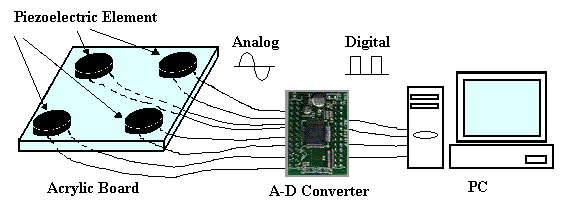
Fig. 1 Positional sensor
and the time difference between the point A and the point C is 30, and then the intersected point by two curves is the shocked point.
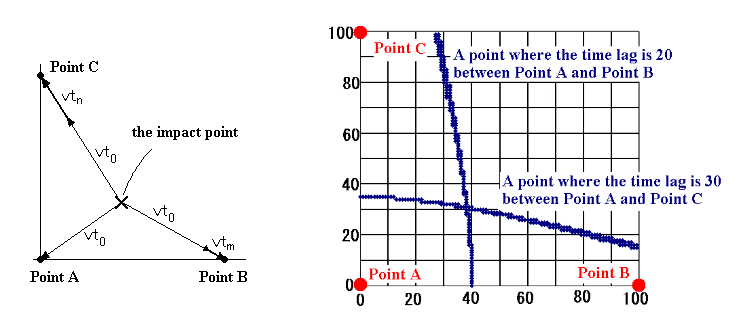
3. Basic experiment
The two piezoelectric sensor elements were fixed on a rectangular acrylic board as shown in Fig. 4. The distance between the centers of each piezoelectric element is 40cm. When the acrylic board was shock, the waveform was observed as shown in Fig. 5.
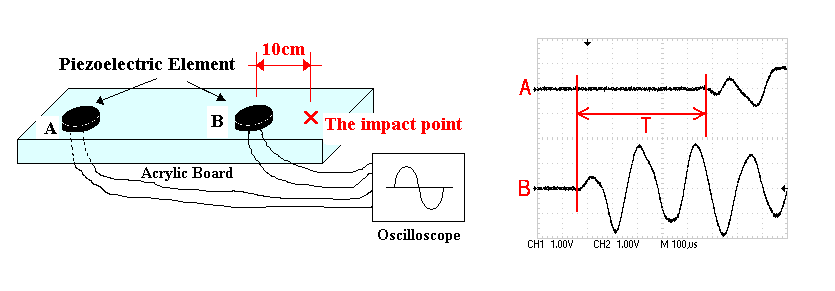
The waveform B reacts earlier than the waveform A, and then, the element B is nearer from the shock point than the element A. Form the experimental result, the distance difference from observed waveforms is converted into the time lag and the shocked position can be detected.
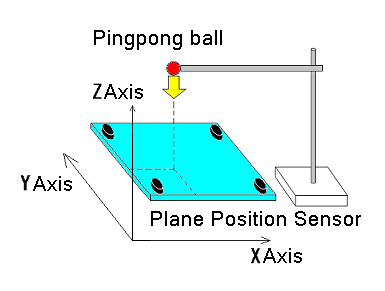
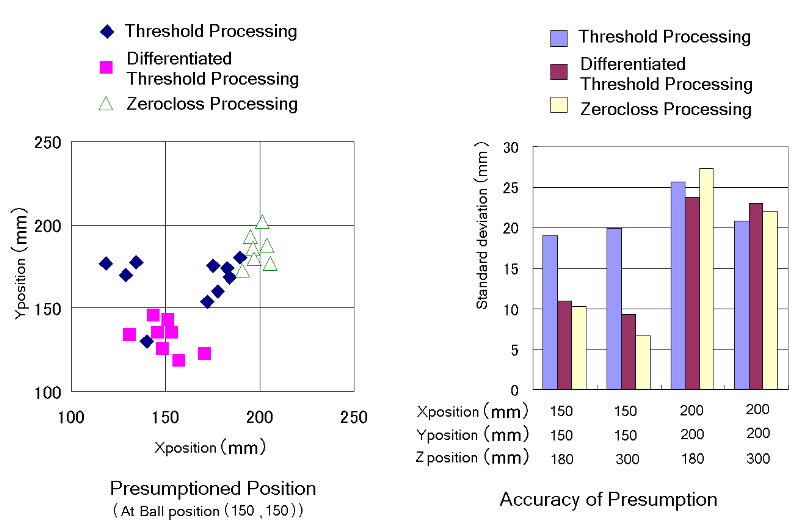
Fig. 6 shows the plane position sensor designed actually, and a ripple displays the pinpoint of the shocked position to extend circularly from the pinpoint.

4. Application to ping-pong table
The method to detect the shocked position for the plane position sensor mentioned above is applied to construct the exciting ping-pong table. Two 90cm squared acrylic boards are prepared for the ping-pong table. The piezoelectric sensors are mounted at the four corners of each board. The analog-voltage signals from each piezoelectric sensor are converted into digital signals by the A-D converter, and the shocked position that the ball dropped is calculated by the personal computer. LEDs are arranged under acrylic boards, and the LED near the shocked position that the ball dropped flashes the light and at the same time, the sound selected from the shocked position is output from sound files. Fig. 7 shows the manufactured model of the ping-pong table.
The height of the ping-pong table is designed to be 70cm so that children can enjoy the exiting game easily. Fig. 8 shows the designed ping-pong table, and Fig. 9 shows the photograph when players are enjoying the ping-pong game with the table actually.
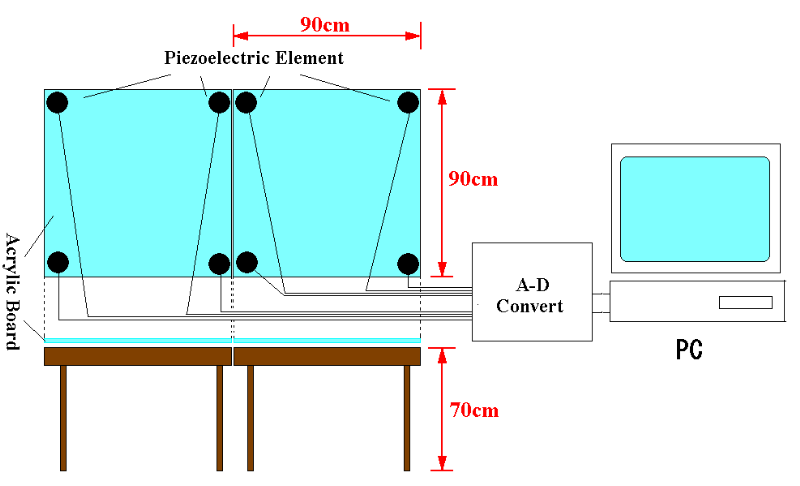
Fig. 7 Model figure of Chatterer ping-pong table
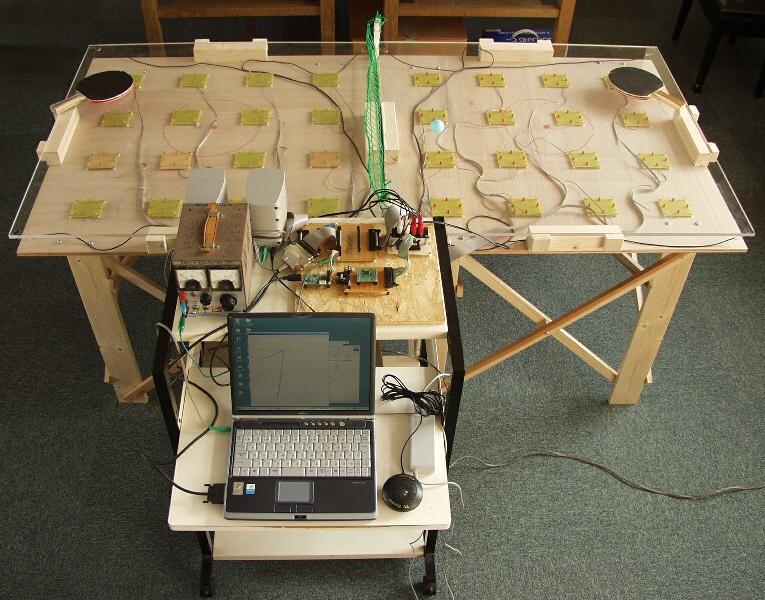
Fig. 8 Chatterer ping-pong table( Demo video )
Fig. 9 Playing Chatterer ping-pong table
5. Player's impression
Although the ping-pong table is designed for a proto model, players have shown the interesting reactions. The sound effects are examined by hearing players impressions. The sounds with four contents are divided into two categories as follows;
| 1. | "ABC voice set version" which says an alphabet from the personal computer, "Meaning-less voice set version" which chatters meaningless words, and "Meaning voice set version" which chatters meaning words in combination. |
| 2. | "Synthesizer Version" which sounds an electronic sound which synthesized from the synthesizer embedded in the personal computer, "Meaning voice set version", and "Meaning-less voice set version" in combination. |
The hearing result after finishing the game has shown that each player feels pleasure for meaningless words despite of meaning words. The synthesizer has affected each player different impressions with electronic sounds.
Demo video
"Synthesizer version" "ABC voice set version"
"Meaning-less voice set version" "Meaning voice set version"
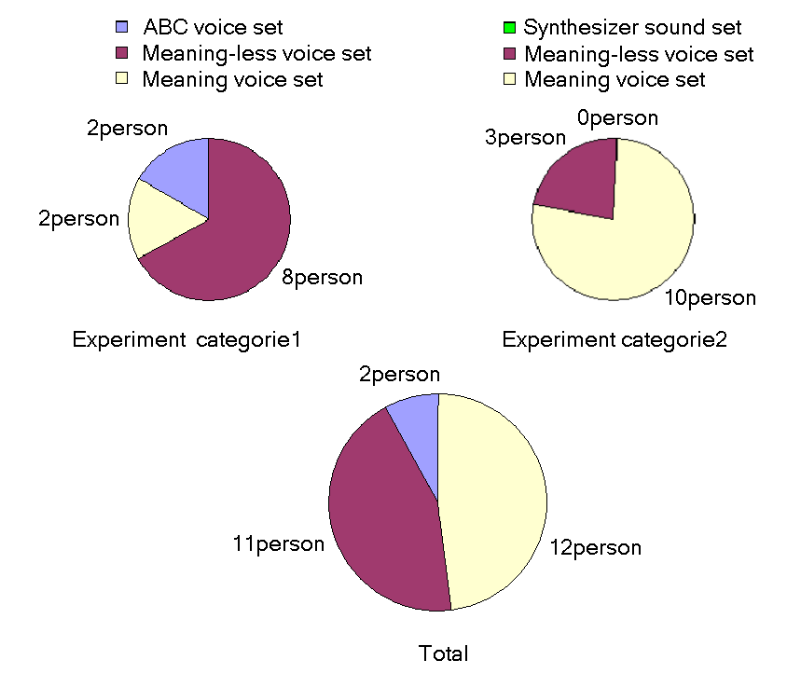
6. Conclusion
In this paper, the intelligent ping-pong table applied the plane position sensor is proposed, and player's reactions for the illuminations and sounds are investigated. Players have shown enjoyable and exciting impressions with the illuminations and sounds. The more impressive patterns for the illuminations and sounds will be continued to study for enjoying the more exciting game.
7. Reference
[1] Hiroshi Ishii, Craig Wisneski, Julian Orbanes, Ben Chun, and Joe Paradiso, "PingPongPlus: Design of an Athletic-Tangible Interface for Computer-Supported Cooperative Play", proceedings of Conference on Human Factors in Computing Systems (CHI '99), 1999 [2] Y.KAWADA, S.DOI, "Chatterer Ping-pong Table", GAS2005, Game Amusement Society (Japanese), 2005